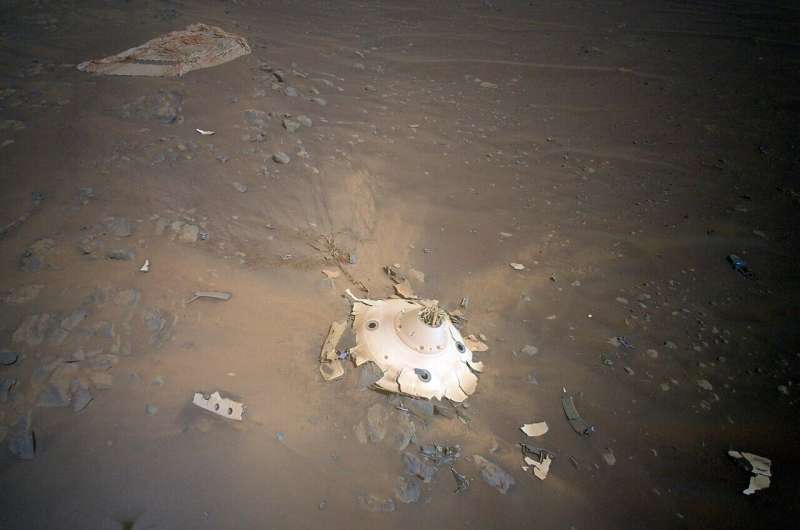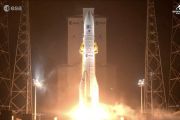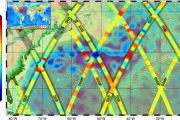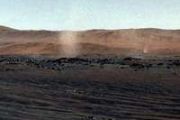
Copernical Team
PAR Government teams up with BlackSky to deliver near real-time imagery
 PAR Technology Corporation (NYSE: PAR) has announced that its wholly-owned subsidiary PAR Government Systems Corporation (PGSC) has incorporated BlackSky's (NYSE: BKSY) commercial satellite data into the Sit(x) cloud-native situational awareness suite making it possible for tactical and operational end users to access near real-time imagery on the Tactical Assault Kit (TAK) mobile platform.
PAR Technology Corporation (NYSE: PAR) has announced that its wholly-owned subsidiary PAR Government Systems Corporation (PGSC) has incorporated BlackSky's (NYSE: BKSY) commercial satellite data into the Sit(x) cloud-native situational awareness suite making it possible for tactical and operational end users to access near real-time imagery on the Tactical Assault Kit (TAK) mobile platform. AFRL'S new lab to accelerate hybrid space architecture
 The Air Force Research Laboratory, or AFRL, Space Vehicles Directorate held a ribbon cutting ceremony April 12, 2022, to herald its newest facility, the Rapid Architecture Prototyping and Integration Development, or RAPID, laboratory that will provide better, faster and smarter space technology to our nation's warfighters.
The $7,326 million lab is nearly 14,000 square feet and will develo
The Air Force Research Laboratory, or AFRL, Space Vehicles Directorate held a ribbon cutting ceremony April 12, 2022, to herald its newest facility, the Rapid Architecture Prototyping and Integration Development, or RAPID, laboratory that will provide better, faster and smarter space technology to our nation's warfighters.
The $7,326 million lab is nearly 14,000 square feet and will develo Ingenuity Mars Helicopter spots gear that helped Perseverance rover land

NASA's Ingenuity Mars Helicopter recently surveyed both the parachute that helped the agency's Perseverance rover land on Mars and the cone-shaped backshell that protected the rover in deep space and during its fiery descent toward the Martian surface on Feb. 18, 2021. Engineers with the Mars Sample Return program asked whether Ingenuity could provide this perspective. What resulted were 10 aerial color images taken April 19 during Ingenuity's Flight 26.
"NASA extended Ingenuity flight operations to perform pioneering flights such as this," said Teddy Tzanetos, Ingenuity's team lead at NASA's Jet Propulsion Laboratory in Southern California. "Every time we're airborne, Ingenuity covers new ground and offers a perspective no previous planetary mission could achieve.
Watch live: Crew-4 enter the International Space Station

The SpaceX Crew Dragon docked with the International Space Station at 01:37 CEST on Thursday 28 April, marking the beginning of ESA astronaut Samantha Cristoforetti’s Minerva mission.
US Judge denies Musk bid to scrap SEC deal barring him from tweeting about Tesla stake
 Elon Musk on Wednesday lost his legal challenge against a US Securities and Exchange Commission (SEC) order restricting him from tweeting about his stake in the electric car manufacturer Tesla, with a judge describing as "meritless" Musk's argument that the arrangement impinged on his right to free speech.
"The motion [...] to terminate the consent decree is DENIED," Judge Lewis Liman wrot
Elon Musk on Wednesday lost his legal challenge against a US Securities and Exchange Commission (SEC) order restricting him from tweeting about his stake in the electric car manufacturer Tesla, with a judge describing as "meritless" Musk's argument that the arrangement impinged on his right to free speech.
"The motion [...] to terminate the consent decree is DENIED," Judge Lewis Liman wrot DLR provides female measuring mannequins for the NASA Artemis I mission
 In 2022, NASA's Artemis I mission will send a spacecraft capable of supporting a human crew to the Moon for the first time in almost 50 years. On this uncrewed test flight, it will be the twin measuring mannequins Helga and Zohar on board the Orion capsule. The MARE experiment devised by the German Aerospace Center (Deutsches Zentrum fur Luft- und Raumfahrt; DLR), will use two identical 'phantom
In 2022, NASA's Artemis I mission will send a spacecraft capable of supporting a human crew to the Moon for the first time in almost 50 years. On this uncrewed test flight, it will be the twin measuring mannequins Helga and Zohar on board the Orion capsule. The MARE experiment devised by the German Aerospace Center (Deutsches Zentrum fur Luft- und Raumfahrt; DLR), will use two identical 'phantom China opens Shenzhou-13 return capsule
 On Tuesday, China opened the return capsule of the Shenzhou-13 manned spaceship which carried three astronauts back to Earth on April 16, according to the China Manned Space Agency (CMSA).
Items carried by the spacecraft, including crop seeds, 8K high-definition memory card storing images and videos taken by the astronauts in orbit, commemorative stamps, and paintings by Hong Kong teenager
On Tuesday, China opened the return capsule of the Shenzhou-13 manned spaceship which carried three astronauts back to Earth on April 16, according to the China Manned Space Agency (CMSA).
Items carried by the spacecraft, including crop seeds, 8K high-definition memory card storing images and videos taken by the astronauts in orbit, commemorative stamps, and paintings by Hong Kong teenager NASA gives boost to Boston University-led effort to model solar system's protective bubble
 A Boston University-led team that has pioneered major advances in our understanding of the bubble protecting the solar system-and all life on Earth-has won a major new grant from NASA. The SHIELD (Solar wind with Hydrogen Ion Exchange and Large-scale Dynamics) DRIVE Science Center has been awarded a new five-year grant to continue advancing its breakthrough work in heliophysics, the study of how
A Boston University-led team that has pioneered major advances in our understanding of the bubble protecting the solar system-and all life on Earth-has won a major new grant from NASA. The SHIELD (Solar wind with Hydrogen Ion Exchange and Large-scale Dynamics) DRIVE Science Center has been awarded a new five-year grant to continue advancing its breakthrough work in heliophysics, the study of how The instability at the beginning of the solar system
 Michigan State University's Seth Jacobson and colleagues in China and France have unveiled a new theory that could help solve a galactic mystery of how our solar system evolved. Specifically, how did the gas giants - Jupiter, Saturn, Uranus and Neptune - end up where they are, orbiting the sun like they do?
The research also has implications for how terr
Michigan State University's Seth Jacobson and colleagues in China and France have unveiled a new theory that could help solve a galactic mystery of how our solar system evolved. Specifically, how did the gas giants - Jupiter, Saturn, Uranus and Neptune - end up where they are, orbiting the sun like they do?
The research also has implications for how terr Mars Helicopter spots landing rig and chute from Perseverance
 NASA's Ingenuity Mars Helicopter recently surveyed both the parachute that helped the agency's Perseverance rover land on Mars and the cone-shaped backshell that protected the rover in deep space and during its fiery descent toward the Martian surface on Feb. 18, 2021. Engineers with the Mars Sample Return program asked whether Ingenuity could provide this perspective. What resulted were 10 aeri
NASA's Ingenuity Mars Helicopter recently surveyed both the parachute that helped the agency's Perseverance rover land on Mars and the cone-shaped backshell that protected the rover in deep space and during its fiery descent toward the Martian surface on Feb. 18, 2021. Engineers with the Mars Sample Return program asked whether Ingenuity could provide this perspective. What resulted were 10 aeri 



























